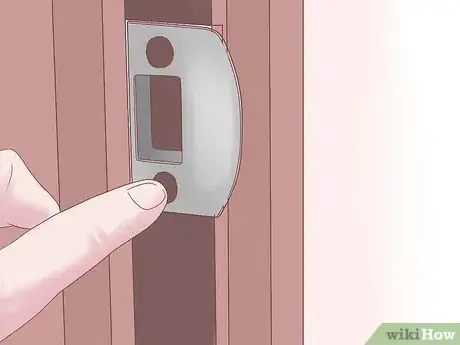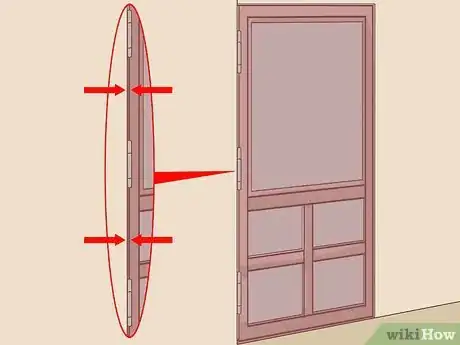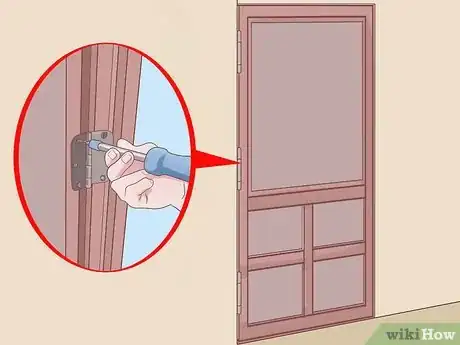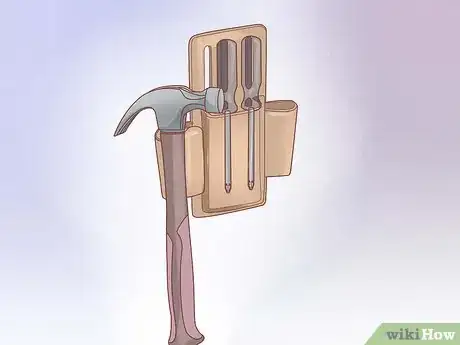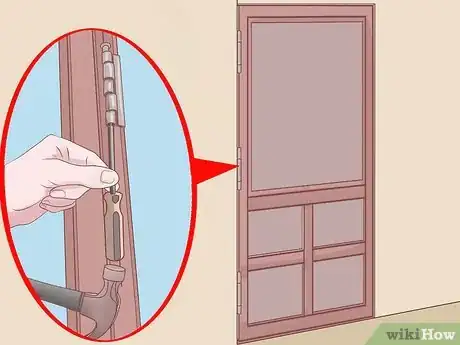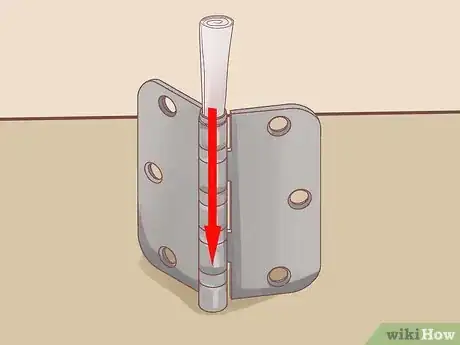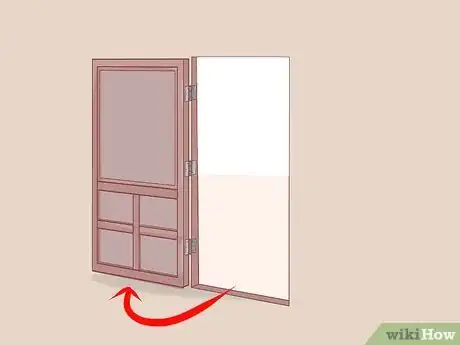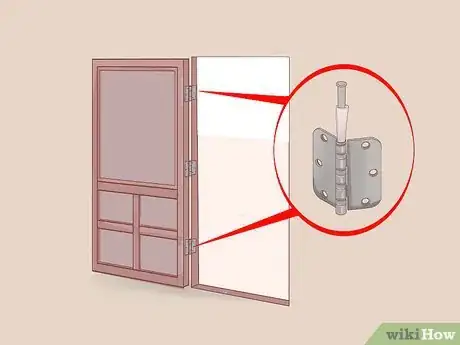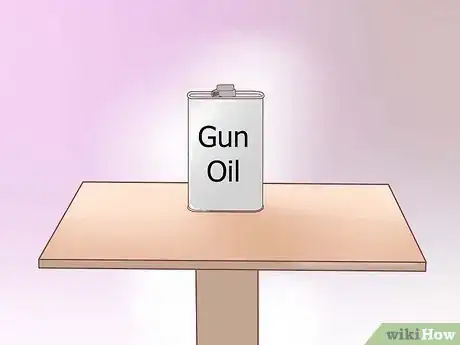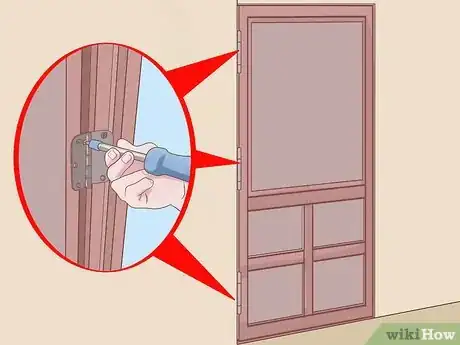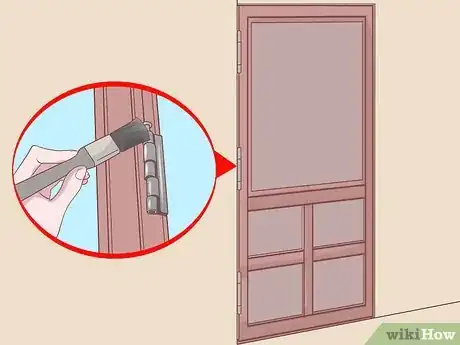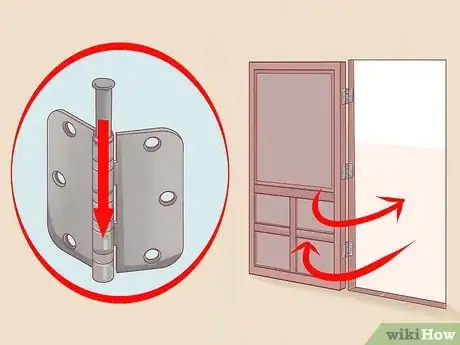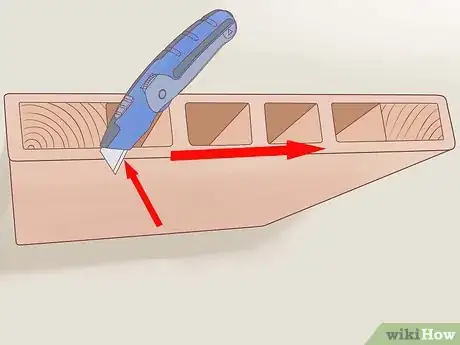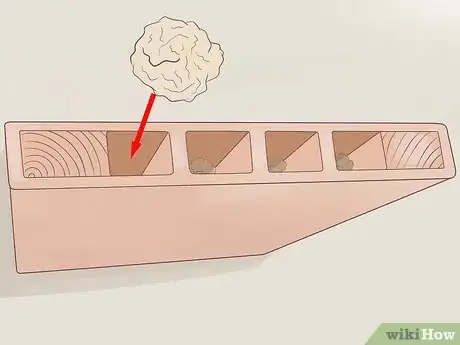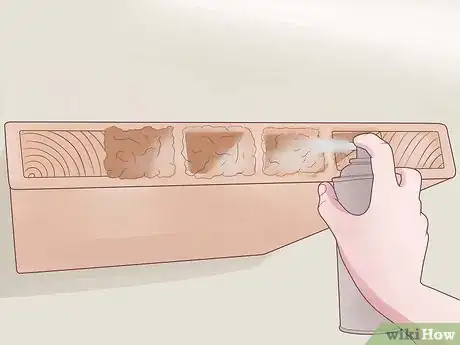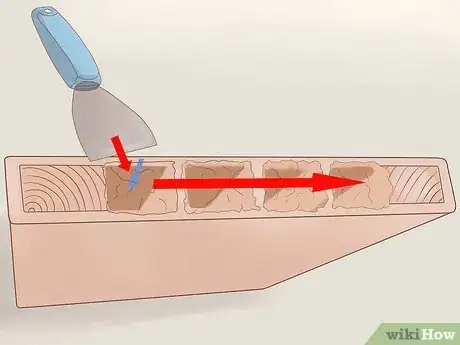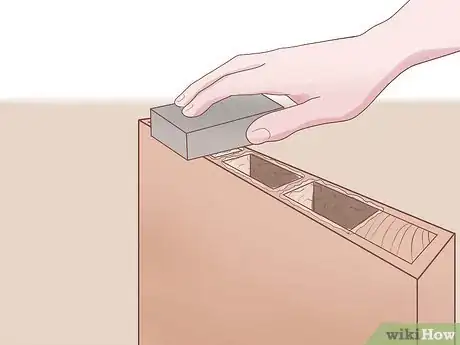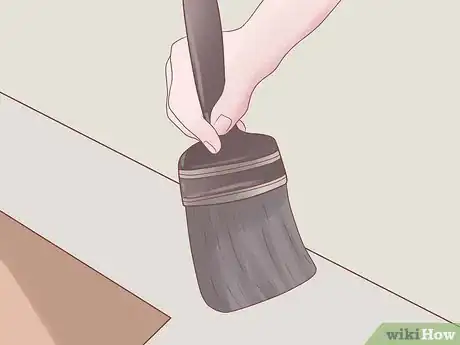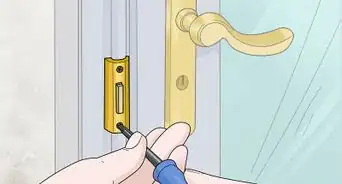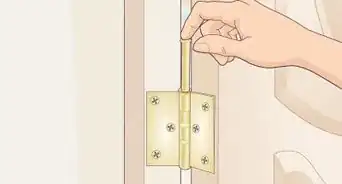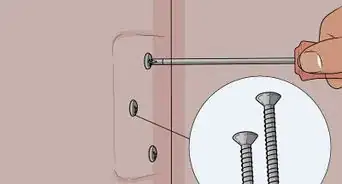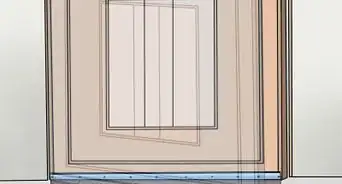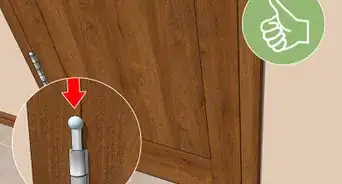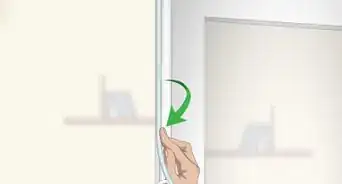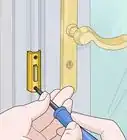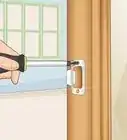This article was co-authored by Abraham Schwartz. Abraham Schwartz is a handyman and the owner of Fixin’ To Do, a home improvement service in Austin, Texas. Abraham specializes in both small to medium residential and commercial sized jobs, ranging from TV mounting to furniture assembly to home automation setup. Prior to starting Fixin’ To Do, Abraham worked for over 10 years as a handyman for third party services and had a lifetime of learning how to improve houses. He holds both his TSBPE Plumbing Examiners and Electrical Apprentice (TX) Licenses. In 2018 and 2019, Fixin’ To do was rated as a Top Pro by Thumbtack.
This article has been viewed 78,395 times.
Temperature, humidity, kids—there are a lot of things that can cause your door to stick or sag over time. No matter whether the problem is with the door itself, the hinges, the latch, or the frame, we have the tips you need to get it sorted out!
Steps
A Door That Won't Close or Latch
-
1Check your strike plate. The strike plate, or metal piece on the jam where the door latches, might be placed too low or too high. This should always be the first thing you check when identifying a door that's not closing correctly. Look for marks on the strike plate that show the latch going above or below the hole. If you see these marks, use a metal file to file down the hole of the strike plate to make it lower or higher so that the latch can go in.[1]
-
2Check the hinges. If that wasn't your problem, then the problem is probably with your hinges.[2] They are probably uneven, with one being too far in or out from the jam. Close the door as much as possible and look for uneven lines. The gaps all around the door should be the same all the way across (along the hinge line, at the top of the door, bottom of the door, and on the side of the door with the latch).[3]Advertisement
-
3Adjust the hinge. The easiest option is the just adjust the center hinge, but you'll probably want to adjust either the top or the bottom hinge depending on the situation, since this should have the most impact. No matter which hinge you need to fix, the process is the same. Unscrew that hinge so that you can access the jam behind it.[4] Cut a piece of milk carton or thin cardboard to the shape of the hinge recess and place it there. Return the hinge flap and screw it into place.[5]
- Usually, if there's a gap on the top latch side, you'll need to adjust the bottom hinge. If the door is bumping up against the top latch side of the jam, you'll need to adjust the top hinge.
- You can find the manufacturer and the model of the door. Visit the manufacturer's website and get the instructions to fix the problem.[6]
A Door That Swings Closed
-
1Gather your tools. You'll need a hammer, a screwdriver, and a strip of paper.
-
2Remove the center hinge pin. Place the screwdriver at the bottom of the hinge pin and use the hammer to tap the bottom of the hinge pin until it comes up out of the hinge.
-
3Place your paper. Fold your strip of paper until it is about .5-1 cm wide, and just a bit longer than the hinge. Place the paper in the hinge pinhole and fold the top down just a bit so that the paper stays in place.
-
4Reinsert the pin. Put the pin back in the hinge. This may take some hammer tapping.
-
5Test the door. Test to see if the door now stays open when you open it. The paper should make the hinge tighter, keeping the door where you place it.
-
6Adjust as necessary. If one piece of paper doesn't work, you might need two. You may also need to put paper in the other hinges as well. Experiment until you get your door working the way you want.
A Door That Squeaks
-
1Get some gun oil. You can use other greases and oils too, but those are not usually intended for metal and result in the metal of the hinge degrading over time. Gun oil is best, since it is designed for use on metal.[7]
-
2Remove the hinge pins one at a time. You want to avoid having to take the door completely off the hinges, so just remove one hinge pin at a time and don't remove it the whole way. You just need access to the first inch or two. Do this by tapping the bottom of the pin with a screwdriver and hammer until the pin pops up.
- You may need a helper or something to prop up the door with if it becomes unstable with the hinges partway out.
-
3Apply the oil. With part of the hinge pin exposed, brush on a little of the gun oil with an old paintbrush or a cloth. It doesn't take much, so don't make a mess!
-
4Replace the pin. Tap the hinge pin back into place and work the door back and forth so that the oil works its way down. Clean up any extra with a piece of tissue.
-
5Continue until all the hinges are oiled. Do each of the hinges in turn until they're all fixed.
A Door with a Hole
-
1Cut the edges. These instructions are for a hollow core door, although you can adjust them to patch solid wood doors with small chips. For a hollow door, use a sharp utility knife to cut the rough edges of the hole so that it has a clean edge which is beveled towards you.[8]
-
2Add a support. Crumple some paper or place another supporting material just below the hole of the door. This will keep the filler material from dripping down the inside of the door.
-
3Fill with spray foam insulation. Purchase some aerosol foam insulation. Only one can should be needed. Fill the hole completely and continue until there is a bubble of foam extending out of the hole as well. When it's dry, use the utility knife to cut off the material outside the door by placing the blade flush with the door's surface and cutting downward.[9]
- The low-expansion foam will work best for this purpose but it's possible to use another kind if your choices are limited.
-
4Spackle the remaining hole. Generously apply Spackle to the remaining hole area. Once it's applied, use a putty knife wider than the hole itself to remove the excess.[10]
-
5Sand the surface.[11] Once it's dry, sand down the surface until it's smooth using 100 grit sandpaper.
-
6Paint the surface.[12] Paint the surface of the door and it should look brand new! Giving the whole thing a base coat and then single top coat will create the most uniform appearance but it's not necessary.
Expert Q&A
Did you know you can get expert answers for this article?
Unlock expert answers by supporting wikiHow
-
QuestionHow do I fix a bigger hole in a door?
 Barry ZakarBarry Zakar is a professional handyman and the founder of Little Red Truck Home Services based in the San Francisco Bay Area. With over ten years of experience, Barry specializes in a variety of carpentry projects. He is skilled at constructing decks, railings, fences, gates, and various pieces of furniture. Barry also holds his MBA from John F. Kennedy University.
Barry ZakarBarry Zakar is a professional handyman and the founder of Little Red Truck Home Services based in the San Francisco Bay Area. With over ten years of experience, Barry specializes in a variety of carpentry projects. He is skilled at constructing decks, railings, fences, gates, and various pieces of furniture. Barry also holds his MBA from John F. Kennedy University.
Handyman
-
QuestionHow can I fix a drafty door?
 Barry ZakarBarry Zakar is a professional handyman and the founder of Little Red Truck Home Services based in the San Francisco Bay Area. With over ten years of experience, Barry specializes in a variety of carpentry projects. He is skilled at constructing decks, railings, fences, gates, and various pieces of furniture. Barry also holds his MBA from John F. Kennedy University.
Barry ZakarBarry Zakar is a professional handyman and the founder of Little Red Truck Home Services based in the San Francisco Bay Area. With over ten years of experience, Barry specializes in a variety of carpentry projects. He is skilled at constructing decks, railings, fences, gates, and various pieces of furniture. Barry also holds his MBA from John F. Kennedy University.
Handyman For exterior doors, you need to install weather-stripping. There are a few ways you can do this, but you typically install a sweep at the bottom of the door to seal the gap between the bottom of the door and the floor. This will limit how much air gets in through the bottom. If you can see light coming in at the base of the door, weather-stripping will make a big difference.
For exterior doors, you need to install weather-stripping. There are a few ways you can do this, but you typically install a sweep at the bottom of the door to seal the gap between the bottom of the door and the floor. This will limit how much air gets in through the bottom. If you can see light coming in at the base of the door, weather-stripping will make a big difference. -
QuestionI just replaced a door. Why won't my door knob work?
 Barry ZakarBarry Zakar is a professional handyman and the founder of Little Red Truck Home Services based in the San Francisco Bay Area. With over ten years of experience, Barry specializes in a variety of carpentry projects. He is skilled at constructing decks, railings, fences, gates, and various pieces of furniture. Barry also holds his MBA from John F. Kennedy University.
Barry ZakarBarry Zakar is a professional handyman and the founder of Little Red Truck Home Services based in the San Francisco Bay Area. With over ten years of experience, Barry specializes in a variety of carpentry projects. He is skilled at constructing decks, railings, fences, gates, and various pieces of furniture. Barry also holds his MBA from John F. Kennedy University.
Handyman
Things You'll Need
- Screwdriver
- Replacement screws or dowels
- Door shim
- Wood chisel and hammer
References
- ↑ https://www.familyhandyman.com/doors/repair/fix-a-door-that-wont-close/
- ↑ Abraham Schwartz. Handyman. Expert Interview. 28 August 2020.
- ↑ https://www.thisoldhouse.com/more/sure-cure-loose-hinges
- ↑ Abraham Schwartz. Handyman. Expert Interview. 28 August 2020.
- ↑ https://www.thisoldhouse.com/more/sure-cure-loose-hinges
- ↑ Abraham Schwartz. Handyman. Expert Interview. 28 August 2020.
- ↑ https://www.youtube.com/watch?v=bihPjroCZjI
- ↑ https://www.bobvila.com/articles/how-to-fix-a-hole-in-a-door/
- ↑ https://www.bobvila.com/articles/how-to-fix-a-hole-in-a-door/
About This Article
If you want to fix a door that's not closing properly, check the metal piece on the jam for marks to see if the latch is too high or low. If it is, use a metal file to file down the hole so the latch fits. If that's not the problem, check if the hinges are uneven by closing your door as much as possible and seeing if it lines up straight on all sides. Next, adjust your hinges as needed. If you're door swings closed, remove the middle hinge pin, fold a piece of paper so it fits into the hinge, and insert the hinge pin again. To find out what to do to stop a door from squeaking or how to fix a door with a hole in it, read on!
